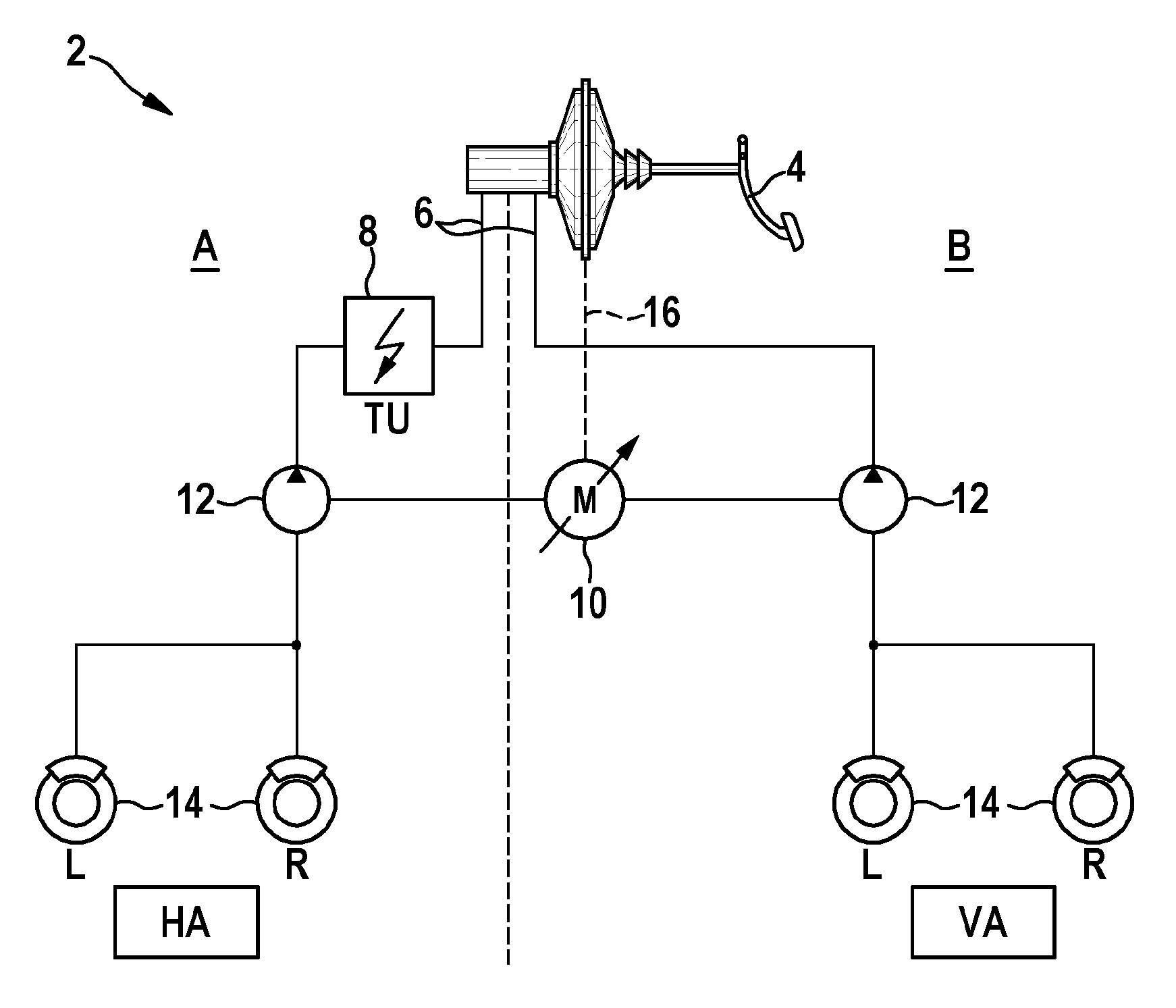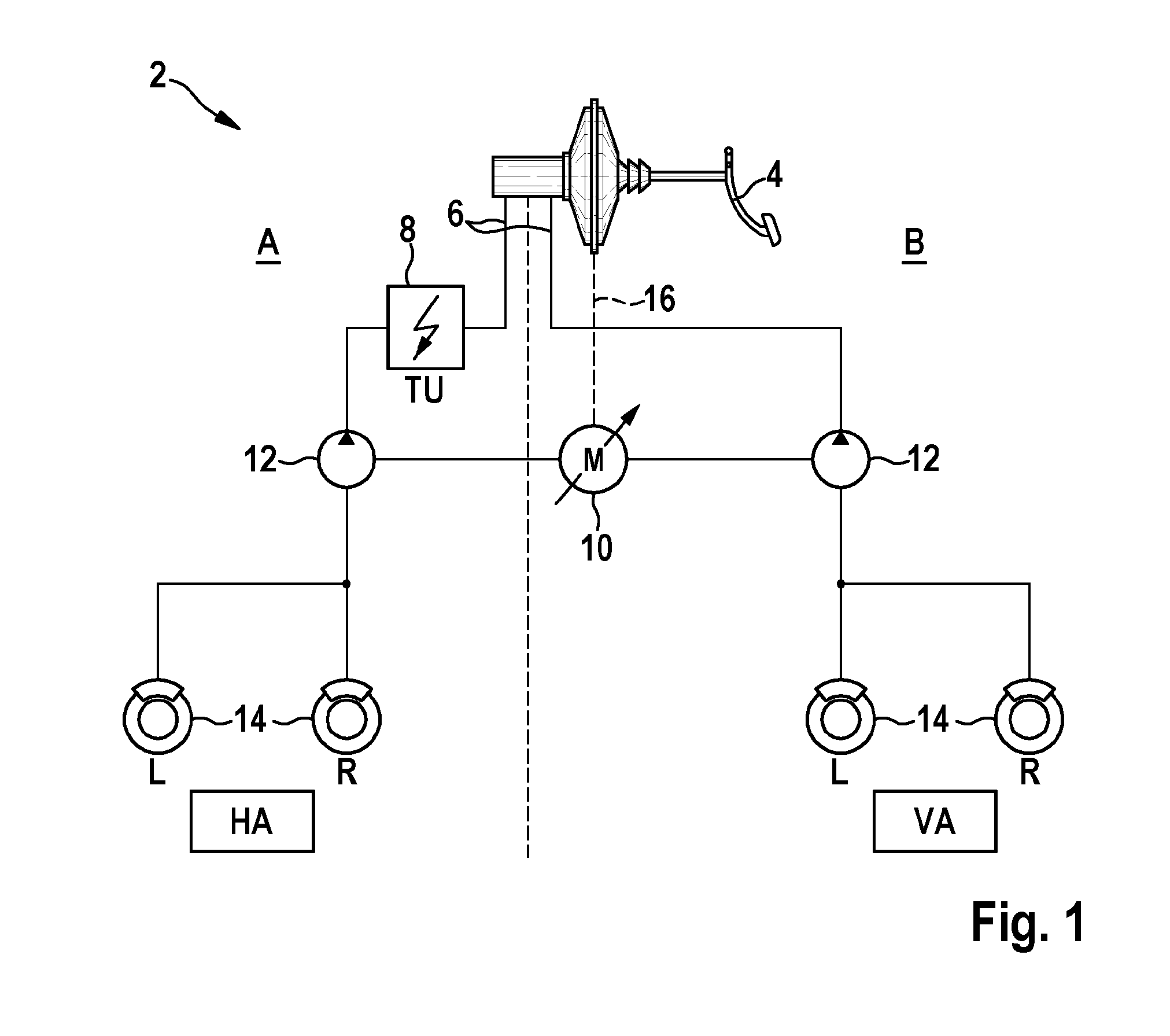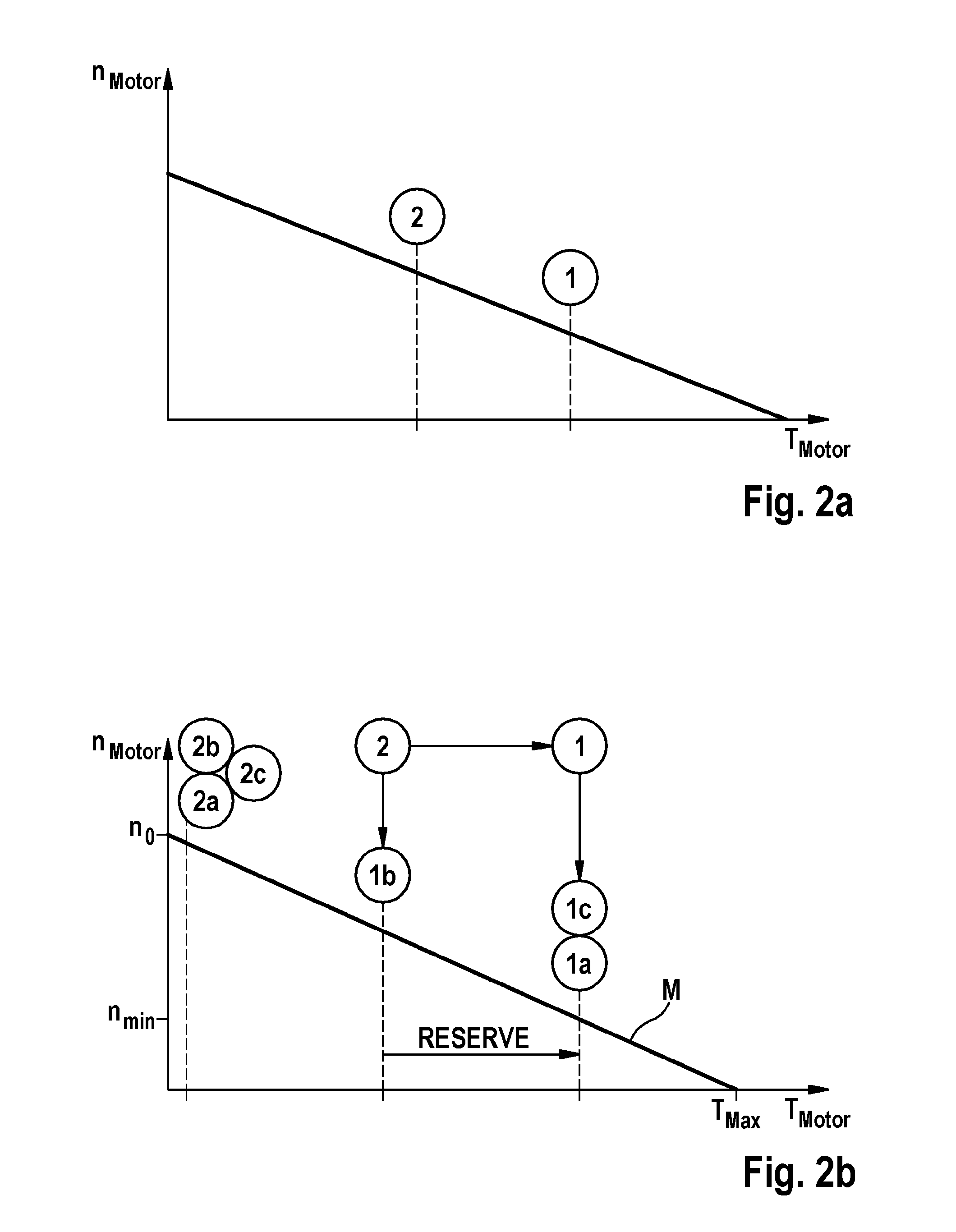Braking system and method for dimensioning a braking system
a braking system and dimensioning technology, applied in the field of braking system technology, can solve the problems of reducing the delivery capacity of the pump element, reducing the speed further, and causing the braking system to produce a high hydraulic pressure, so as to reduce the total demand on the motor element, reduce the torque or motor torque, and reduce the effect of pressur
- Summary
- Abstract
- Description
- Claims
- Application Information
AI Technical Summary
Benefits of technology
Problems solved by technology
Method used
Image
Examples
Embodiment Construction
[0020]One exemplary embodiment of a braking system according to the present invention will be described in greater detail with reference to FIG. 1.
[0021]FIG. 1 shows a braking system 2 in highly simplified form, which is designed as a partial brake-by-wire system. On the one hand, a driver, by using brake pedal 4, may introduce a brake pressure into hydraulic line system 6, which finally leads to four wheels 14, for example, with use of suitably situated and guided hydraulic lines 6.
[0022]The hydraulic pressure acts on brake components (not shown in greater detail) on wheels 14, whereby braking of wheels 14 and therefore deceleration of the vehicle occurs. As an example, braking system 2 of FIG. 1 is divided into two brake-circuit partial circuits A and B, brake-circuit partial circuit A corresponding to the rear axle in the example while brake-circuit partial circuit B corresponds to the front axle of a two-axle vehicle in the example.
[0023]In addition, pump elements 12 are provide...
PUM
 Login to View More
Login to View More Abstract
Description
Claims
Application Information
 Login to View More
Login to View More - R&D
- Intellectual Property
- Life Sciences
- Materials
- Tech Scout
- Unparalleled Data Quality
- Higher Quality Content
- 60% Fewer Hallucinations
Browse by: Latest US Patents, China's latest patents, Technical Efficacy Thesaurus, Application Domain, Technology Topic, Popular Technical Reports.
© 2025 PatSnap. All rights reserved.Legal|Privacy policy|Modern Slavery Act Transparency Statement|Sitemap|About US| Contact US: help@patsnap.com



